On Innovation
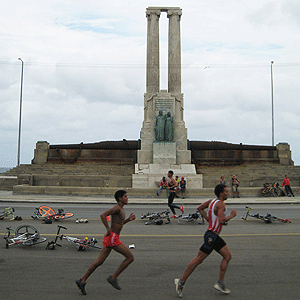
"Obsessions make my life worse and my work better." –Stefan Sagmeister
There's nothing new under the sun. [Ecclesiastes 1:9]
Or is there?
Innovation is the fun part of producing triathlon. In the beginning, a race director learns the basics: what equipment is needed, how to recruit volunteers, what permits are necessary and where to get them, how early to stop publishing your phone number before race weekend. But most race directors I've known are creative souls, and the urge to do something new – to innovate – comes quickly thereafter. For many, it's why they took the job.
Innovation generally requires three things: inspiration, opportunity, and courage. Opportunity is usually scapegoated as the main hindrance, but typically it's courage that we stumble over; every one of us has had an exciting, bold idea that will never see fruition because its creation risks loss: of money, of time, of security. I am guilty of this as well – for years I have wanted to start an international triathlon in Cuba, but the path forward is not obvious nor even necessarily legal. In the meantime, I draw encouragement to innovate from the advice of a friend, who told me to always do one thing more than is required – and to make that thing the most memorable.
Innovation comes about when something completely unrelated to the task at hand sparks a thought that perhaps it could be related to the task at hand. Creative folks are open to suggestion and ask themselves, "How could this nifty idea that someone else had be part of what I do in my life?" If you ask yourself that question often enough, eventually something will click and the world will think you're a genius (or insane, if you keep asking the question out loud).
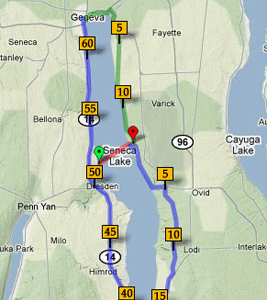
Let me give you two examples that explain where some of my ideas come from, one of them borne from the world of triathlon and one of them not. (In my experience, those ideas not originally related to triathlon, or sports for that matter, turn out to be the most interesting.)
A while back Dan Empfield, publisher of this website, bemoaned the demise of triathlons based on local topography or other place-based features. The idea resonated with me, as one of my guiding principles as a race director is to form the race to the place – never vice versa. In considering Dan's thought, it occurred to me that races that do this – Escape from Alcatraz, Survival of the Shawangunks – automatically stir the imagination and often become iconic and long-lasting. I filed the idea away.
Some years later, I noticed that triathletes tend to like things that sound difficult (it's important to note that what's actually hard and what appears hard are two different things (and typically the latter is more important to the triathlete)), they like to attend events that say they are hard (same caveat applies), and they like company for their chosen misery. I learned this by observing races like the Triple T in Ohio, EmbrunMan in France, and Hood to Coast in Oregon.
These unrelated fragments conspired to encourage the development of the Seneca Epic (map above), an event that's on my to-do list but has yet to happen due to difficulties finding a date and obtaining a permit from the state DOT. The race capitalizes on the convenient fact that Seneca Lake is 73 miles in circumference, with the city of Geneva at once 60 miles (around the southern tip of the lake) and 13 miles (around the northern tip) from Sampson State Park. This is convenient because those are ideal distances for a bike and a run. The swim across Seneca Lake (remember, we're using the local topography) is not as convenient at 2.8 miles, but that gave me reason to make the Seneca Epic a team event, with two teammates allowed to trade off during the swim (and work together on the bike and run).
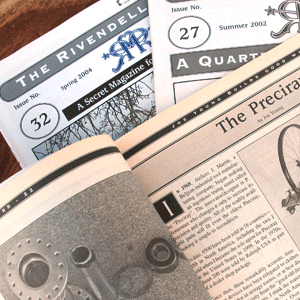
The "introduction" of the race (through an April Fool's Day newsletter) proved popular: it had daunting topography to overcome, perceived (and actual) difficulty, a hint of danger, and the opportunity for shared experience. Elements known to be popular on their own can combine to create a novel event.
A second example comes from a strange and wonderful newsletter published by Rivendell Bicycle Works in Walnut Creek, California. The Rivendell Reader comes out "every so often" and I defy you to not curl up with it in your favorite armchair on a rainy day. Rivendell as a bike shop is innovative in that they refuse to stock the latest gadget or gizmo – most everything they sell is steel or wool – and the Reader is innovative in that it might be about trout fishing. Or poetry.
Last fall's(ish) issue included a contest: rewrite verse 6 of Edgar Allen Poe's The Raven without using the letter "e." In other words, keep the meter, message, and tone the same, but don't use the words "meter" or "message" or "tone" (or "the") because they contain an "e." Sound hard? It struck me as nearly impossible.
I give you Poe's original verse 6 for reference:
Back into the chamber turning, all my soul within me burning
Soon again I heard a tapping, something louder than before.
"Surely," said I, "surely that is something at my window lattice;
Let me see then what thereat is, and this mystery explore-
Let my heart be still a moment, and this mystery explore;-
'Tis the wind, and nothing more!"
It took me five hours of hair-pulling consternation in O'Hare's C concourse before a version sans "e" made itself known (note: you're allowed to use the word "Lenore," as it's the name in the original poem):
Thoughts aghast at horrors untold, soul adrift and shrinking sixfold
By and by, again that rapping- confound it all, yon loud Lenore.
I must, by dawn, I must unmask what's bamming now upon my glass,
What's slamming down upon my wrath, and disrupt this aural war-
Still taut lips from unsought shaking, and disrupt this oral war;-
'Tis that brat, with wind as cov'r!

What on earth does this have to do with triathlon? It's how this year's µMussel was born.
The µMussel is a super-sprint triathlon prologue to Musselman weekend in July. It consists of 100 yards of swimming, 0.6 miles of biking, and 0.2 miles of running… but with a twist. Participants have to use a child's tricycle or Big Wheels during the bike portion. This came to me when considering the Poe contest; the folks at Rivendell must have said to themselves, "What can we remove from the basics of prose to provide a challenge?" When I asked myself the same thing – "What can we remove from the basics of triathlon to introduce novelty?" – the answer was obvious: the bicycle!
In all things there is room for innovation; you just have to be open to it. You do this by questioning accepted practices, by reading, by immersing yourself in things you know nothing about. The TED talks – "riveting talks by remarkable people, free to the world" – offer inspiration by the boatload. Sometimes the content is even directly instructional.
Consider a talk given by Stefan Sagmeister, founder of a graphic design company in New York. In a talk on sabbaticals, Stefan explains how every seven years he takes a year off. The year has no stated purpose – no to-do lists, no expectations, no "deliverables." Instead, he dabbles. He dreams. He putters and tinkers. And his mind responds to the fresh air. The first time he did this, every project he worked on in the subsequent seven years had its genesis in that year spent doing "nothing."
I need that time away. We all do. I organize three multisport races, one each in May, July, and August, and I need every month from September to April to recharge. In order for these races to be creative, unique, and authentic, I need time away from them.
There are thousands of ideas out there waiting to be realized. I keep a list, and what's preventing me from acting on them is either lack of opportunity or lack of courage (see "what's required for innovation to happen," above). I'd like to hold a nighttime triathlon, inspired by a similar race in Germany. A newspaper article about the "gift economy" led me to envision triathlon by donation as a way of addressing runaway entry fees. The "Rolling Green Gear Machine," a proposal I submitted to a program administered by Nike and Architecture for Humanity, describes a platform for creating reusable, shared, distributed infrastructure for bicycle, running, and triathlon events. And within every idea constellation there are dozens and dozens of smaller thoughts that twinkle into existence.
There might not be anything new under the sun, but that's why you dream by night.
Series installments:
On Design
On Beauty
On Technology
On Disaster
On Liveability
On Stories
On Innovation
On People
On Community
On Fun


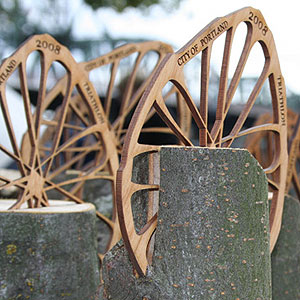
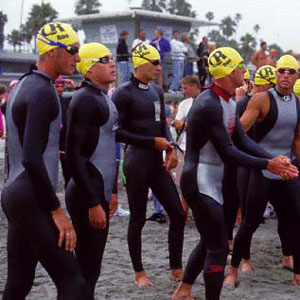
Start the discussion at slowtwitch.northend.network